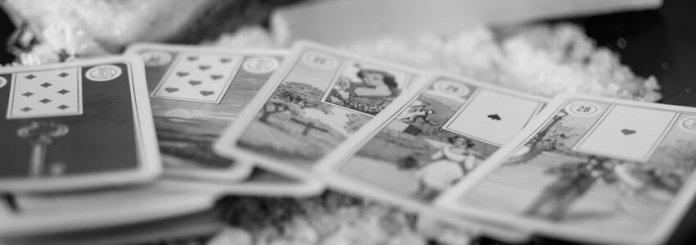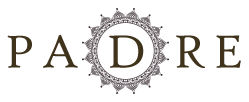What is Lenormand and How Can I Read these Tarot Cards?

Most people are familiar with the basic concept of Tarot cards and Tarot readings, but fewer people are aware of Lenormand cards. What is Lenormand reading and how can you learn to do it? The Lenormand Tarot is much simpler than a standard Tarot deck, you’ll be relieved to hear. We’ll briefly discuss the history of these cards, the reading process, and then end by covering each of the cards and the Lenormand deck meaning.
What does Lenormand mean?
And what are the Lenormand tarot and its history? This deck finds its origins in Paris during the late 1700s. A popular fortune teller existed at this time who was known as Marie Anne Le Normand.
It isn’t known if Marie Anne Le Normand actually created this deck or if it was simply named after her, but as an oracle she certainly used cards. What is Lenormand and why was secrecy important?
During these times, it was risky to be strongly associated with anything perceived to be magic or sorcery. Well, the earliest known official publication of the Lenormand deck is in Germany in 1779. It was part of ‘The Game of Hope’, which came with dice.
The cards were used to create a board and players would move around this board based on dice rolls. This explains the basics of the deck’s origins, but what is Lenormand?
Get in contact with your Guardian Angel and receive your FREE ANGEL READING, just by filling out this form:
How many Lenormand cards are there?
What is Lenormand is something many beginners find themselves asking. A Lenormand Tarot deck typically comes with 36 cards, although some decks do come with extras as there are several variations available.
If you’re planning to carry out reading but you’re new to the deck, it is best to put any additional cards to the side until you’re familiar with the basics.
When we’re asking ourselves, what is Lenormand, we find that one detail makes this deck stand out in comparison to other decks: the simplistic nature of the cards and images.
Tarot Cards were once quite simple, but over the centuries each card began to carry a variety of different meanings, with each one containing any number of smaller details that can alter interpretations drastically.
What is Lenormand in comparison to a modern Tarot deck? Well, most Lenormand cards have two distinct features:
- Firstly, most decks have numbered cards. This reduces the chance of confusion, as you can verify any image via its number.
- Secondly, each one contains a simple image. For example, a ship or a snake.
These images rarely contain backgrounds or important smaller details. What you see is what you get, and it’s up to the reader to understand how to interpret these images.
The second common feature (although this isn’t included in every deck) is a smaller playing card that often appears at the top of the card. So, what is the Lenormand card spreading?
The Spread
A spread essentially defines the type of reading you’re going to carry out. Ask yourself: what is Lenormand storytelling? In a standard Tarot reading, you may choose a 3-card spread, but with the simpler Lenormand deck meaning, you have to view the spread as being stages of a story.
What is Lenormand and what spread should you use for reading? Well, the most common Lenormand spread is known as a string. Strings are lines of 2, 3, 5, or 7 cards that provide you with sections of a story. We’ll look at an example in a moment.
What is Lenormand and what other spreads are there? Well, you have Squares, which is a 9-card spread. You also have what’s known as a Grand Tableau which uses all 36 of the cards. This spread is certainly not for beginners!
The Reading
Now that we have the basics covered (almost), what is Lenormand reading and how can you do it? Well, have the person who the reading is decide on their question (if it’s you, simply hold the question in your mind). What is Lenormand and what steps come next? You want to shuffle the cards thoroughly, and then deal out the number of cards necessary for your spread. Let’s consider what is Lenormand’s reading is about interpretation.
The next step is interpreting the meaning of the cards. Remember that when you’re asking yourself, what is Lenormand, it’s a story, and so each card merges with those around it. We’ll explore the basic card meanings and then look at an example.
Card Meanings
We’ve answered: about the Lenormand tarot, but let’s take a moment to explore the cards further. The benefit of the deck being simplistic is that each card carries a very open message. We’ll now look at each of the cards, its number, and the vague meaning associated with it.
- Rider: A messenger or message.
- Clover: Good luck or fortune.
- Ship: Travel.
- House: The place you consider/feel at home.
- Tree: A family tree, relationships, and sometimes health.
- Clouds: Something being unclear and hidden, often leading to confusion.
- Snake: A deceiver or enemy.
- Coffin: Something ending slowly.
- Bouquet of Flowers: Appreciation
- Scythe: Something ending quickly.
- Whip: Repetition.
- Birds: Mutterings and gossip.
- Child: Represents a child or children.
- Fox: Work, projects or tasks.
- Bear: A figure of authority.
- Stars: How others see you.
- Stork: Change.
- Dog: Friendships and loyalty.
- Tower: Governments
- Garden: Ability to maintain relationships.
- Mountain: A long-lasting issue.
- Crossroads: A choice.
- Mice: Things falling apart.
- Heart: Love.
- Ring: Commitment.
- Book: Knowledge or secrets.
- Letter: News or information.
- The person (if male) or the most important male figure in their life.
- The person (if female) or the most important female figure in their life.
- Lily: Peace and tranquility.
- Sun: Represents success or second chances.
- Moon: Emotions and feelings.
- Key: Something important.
- Fish: Finances and abundance.
- Anchor: Stability.
- Cross: Burdens.
Reading Example
Let’s say you’re doing a 5-card String. You play the Ship (3), the Fox (14), the Crossroads (22), the Heart (24), and the House (4). So, what-is-Lenormand reading and how can we interpret this message.
Remember the question: what is Lenormand storytelling? Well, here’s an example. The Ship and the Fox could mean that you’re going away for work.
Wherever you’re going, it’s for business, not pleasure. While on this journey you’ll have to make a choice, represented by the Crossroads card.
As your last two cards are the Heart and the House, you may have to choose between returning to where you consider home or following your heart (could be a person you love or a place or idea). What is Lenormand? Hopefully, you now have your answer.

